Abstract
This paper presents an approach to assist students, especially children to be more focus on what they see while listening to a presentation in an online learning. Particularly, in the current pandemic situation due to Covid-19, the Movement Control Order (MCO) has made it harder for students to go to school. There are also some challenges for students to adapt in participating in the home-learning program, such as communication barrier via video calls with their teachers. Thus, an appropriate method is required to ensure students can continue their education through online learning more effectively. As such, Virtual Reality Kids Pedagogy Learning System (VR Kidos) was developed with integrated multimedia elements: audio, text, images, and animation to solve the problem of difficulty to recognize and to improve the long-term memory of children. The techniques used in this study were survey and interview to obtain feedback from respondents and then the data collected were analysed using quantitative and qualitative methods, respectively. For the software development method, the ADDIE Model was employed by organizing and streamlining the production in course content. From the findings, VR Kidos system was designed and developed to produce an interactive media which gives the information in an entertaining way especially for children. This is because the system provides the modern ways of doing exercises in virtual world with 3D elements. This system can enhance user mood with calming background and suitable font for kids. Besides, it allows user to get enough information independently without a teacher.
Keywords: Early childhood education, learning process, multimedia technology, virtual reality
Introduction
Students are familiar with conventional learning methods which have been practised for decades. However, this conventional learning methods could have been one of the reasons that are causing students’ enthusiasm level to decrease for their passion in education.
A good education learning system is dependent on the pedagogical approaches that teachers use in classrooms. Interactions among teachers and students in delivering knowledge is very important. It is important to have teaching methods that help students’ progress between levels in an interactive environment. The goal is to have a right approach that transforms students to be independent learners (Muijs & Reynolds, 2005).
Traditional Method versus Modern Method in Teaching
Traditional method in teaching relies heavily on textbooks. Conversely, modern method relies on a hands-on approach. Traditional method breaks the teaching materials in parts, moving on to the entirety. Modern method is done the other way around: it goes from the whole and then broken down into parts. The emphasis of traditional method falls on basic skills while the emphasis of modern method is on big ideas. The traditional method tests the students in separate activities but in the modern method, the test is more about the integration with the teaching and learning, occurring through portfolios and observation (Brooks & Brooks, 1999; Khalaf et al., 2018).
Learning methods with ICT
The influence of the advancement of ICT is pivotal in the development of education. Interactive multimedia learning applications have been introduced to the classrooms, blended learning as well as distance learning which implementation involves web-based learning. This new paradigm exposes a more student-centred learning experience (Khamparia & Pandey, 2017).
The impact of this type of learning method has changed the role of a teacher to just being a facilitator as there is two-way interaction. Pantelidis (2014) highlighted that Virtual Reality (VR) has already been applied in learning practices and has already been considered a natural evolution of Computer-Assisted Instructions (CAI) or Computer-Based Training (CBT).
Virtual Reality Kids Pedagogy Learning System
VR can be seen as a new medium especially for children and students as an alternative way of learning. The system Virtual Reality Kids Pedagogy Learning System (VR Kidos) provides a convenient way of learning for children in terms of their ability to recognise numbers and alphabets. It should erase the conventional methods that make students uninterested in class, feel discouraged and bored, and stop trying to accomplish the tasks given, and finally do poorly in tests (Felder & Silverman, 1988; Iwin et al., 2020).
For this system, children aged 7 to 12 years old are the target audience. This is because this age range is prominent for the development of a child’s mind as it receives information directly from school sessions exposure (Mantovani, 2001). The challenge is to catch the students’ attention as they are easily distracted. Sounds and bright colours attract children, therefore by applying a mixture of many colours with different frequencies of sounds are suitable for a child’s capacity that can seize the child’s attention (Sawsan et al., 2012).
Digitalization of Teaching Method
It is projected that VR is relevant in the pedagogy approach in teaching the Z generation, those born from the year 2010 until 2024 who would have embraced technology early in life (Mccrindle, 2012). VR creates a more appealing centre of attraction in education for children. By using three-dimensional virtual learning environment (3D VLE) background to attract students in developing their sense of humour in the learning process by using Unity 3D software.
Digital technologies change people’s life, way of communicating, thinking, feelings, influencing on other people, social skills, and social behaviour. This is supported by Myamesheva (2015) who commented that the high-tech environment could reshape the human brain. With VR, students can interact with what they see as if they were really there. This could lead to other benefits in education which may include the ability to inspire creativity and spark their imaginations.
VR gives a stimulation of an artificial world that is near to reality. A specific technology may be operated from the identification of the user’s voice – it could be words, letters, numbers, or equations, while projecting the image of the requested reality from the spoken words as an output of the VR (Mohsen & Samad, 2019).
Concept of VR
The concept of VR is ideal for the usage of children in early school education, such as primary or elementary school children as it is designed to fit the needs of a child. The system may be designed such that it projects an interface that is user-friendly, colourful and attractive. VR technology for this purpose would allow students to have open access to an adventurous experience whilst learning by familiarising the numeric and alpha characters easily. The device projects the image by request of the user, and the image will be visualised immediately and seen for a duration of 13 milliseconds before the next projection appears. This would train the students’ ability of memorization as the brain continues to process and remember the previous projected image (Ayoub & Pulijala, 2019).
Problem Statement
During the MCO, students have been depending on technology in their quest for education through online learning and having video calls with their teachers. There have been some barriers in terms of communication for a teacher to teach students by the online class medium (Ali & Nur, 2020). Online classes are difficult for primary school students. There are challenges for students to adapt as a student participating in home-learning programme.
The existing pedagogy of learning cannot be the same way for children as it can be dull and non-interactive, particularly when the children and students need to solely rely on textbooks. The education system should be changed from time to time to ensure students can easily adapt and follow what teachers want to teach.
Children and students have started being exposed to technologies such as mobile devices at a very young age. Besides, the abundance of ICT tools and apps in school as well as kindergarten have not been very well utilized in education even though there are many devices that can be used including VR. The application of technology in education could be the cause of students thinking out of the box and gaining more creative in thinking.
Research Questions
In the study, three research questions were formed as follows:
How does the development of an application learning management system can progress the learning curve of a student?
How will this learning platform increase students’ interest in learning?
How effective is the utilization of visualization techniques in VR in the learning process?
Purpose of the Study
In meeting the needs of students and children in this era, it is important to find a solution that can enhance their learning and yet entertaining. At present, students and children are more likely to be exposed to a variety of technological devices. They would want to use a suitable technology to match their fulfilment and comes out with a different result by trying new methods of learning. Furthermore, the usage of media technology among the students and children in education is very crucial and must be is in line with the development of technology. Thus, the impact of mastering the knowledge in using technologies, especially VR among students nowadays will ensure they are at par with others.
In doing so, the medium of the technology should attract students to use and explore this system. Moreover, VR may improve the quality of students’ language through the sensory nature of VR. In addition, the immediacy of the experience will be beneficial for students who are struggling to recognize and remember the alphabet and numeric. Hence, this study attempts to provide a solution that meets the needs of the young learners using an innovative approach. With that in mind, the VR Kidos System was developed to assist users to obtain information more clearly and comfortably by interacting with the VR itself.
Research Methods
The research methods employed in this study consisted of two parts: quantitative and qualitative methods for data collection using survey and interview, respectively and the ADDIE Model for the system development.
Survey
Questionnaire was sent to respondents through the WhatsApp apps and done through Google Form. By using Google Form, the data obtained were presented in the form of pie charts automatically. Respondents included parents, students and children. Eighty-six respondents tended to the questionnaire. Majority of the respondents were people between the age range of 25 to 45 years old with different backgrounds. They included students, working adults, primary school children and the general public with children. This was done to have a better understanding about the system functionalities.
Interview
An interview was also done with a respondent who has a strong education and experience in Early Childhood Education background. The respondent is an expert in that field and a kindergarten teacher which is relevant as this project is specifically for elementary kids. The most important thing in collecting data from this interview was for fact-finding on target audience such as students to meet the most suitable user requirements. The type of data from the interview session is qualitative which does not show in the form of numbers. All the information gained was descriptive.
The ADDIE Model
The system development used the ADDIE Model as part of the research method. The ADDIE Model is an instructional design methodology used to help organize and streamline the production of the course content. The ADDIE is an acronym for Analysis, Design, Development, Implementation and Evaluation. It provides a structural method and ideal framework especially in designing measurable learning programs. It is a powerful model to improve the way future iterations are made which are flexible with clear learning objectives. The development is very useful in managing tools and allowing for the design (Bates, 2014). Figure 1 shows the ADDIE Model framework.
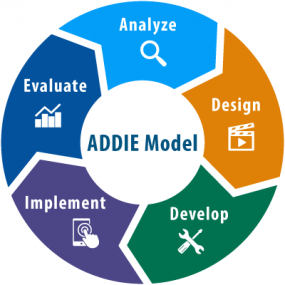
After the data collected from the survey and interview were analyzed, the user requirement can be evaluated which derived functional requirements and non-functional requirements. Thereafter, the software was developed according to the five steps of ADDIE Method: analysis, design, develop, implement, and evaluate. Once the VR Kidos System was developed, testing was required to ensure that the system is functional. This also aids in the detection of problems that may be concealed from the end-user.
Analysis
A set of questionnaires had been created and data were collected from 86 respondents. The results showed that most of the respondents (82.6%) are in the age range of 20 to 29 years old. The least respondents are those whose age is below 19 (5.8%). Thus, it can be deduced that the former would be the better target audience to use this system.
Employment of a respondent plays a role in determining who would also be the target audience. The results indicated that the majority of the respondents are students, which culminates to the objective of this system.
The research also needs to satisfy the objective of teaching children. Therefore, statistics were also done to find out among the respondents if they have children or relatives between the ages of 5 to 9 years old. Forty-three respondents have children between that age range while another forty-three do not. Among the 43 respondents who have children whom they know have a relationship with, most of the relatives with children is their cousin (32.6%) and the least is an aunt (2.3%).
Figure 2 below shows that the method of learning for these children, that is the majority of them are school-going children (90.7%), compared to tuition (32.6%) or home schooled (30.2%).
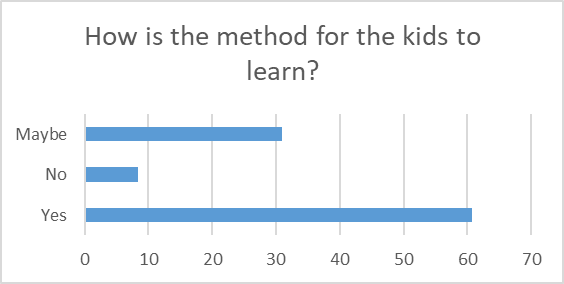
Figure 3 shows the most effective way they think about the elements of teaching. As can be seen, text is considered as the least effective way, compared to pictures and visually and auditory methods.
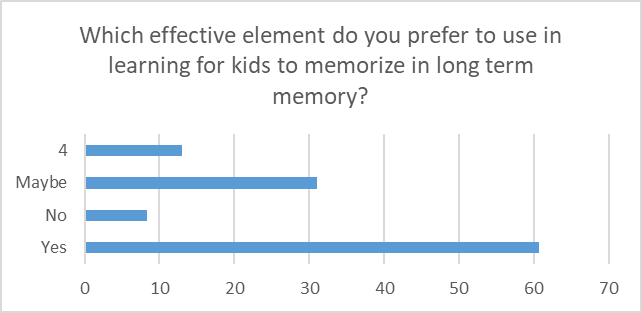
Figure 4 displays that VR is rarely used but it is agreeable that it would have been an effective method in learning. The “Agree” statistic is highest (38.1%) followed by “Strongly Agree” (33.3%), Neutral (16.7%) and “Strongly Agree” (7.1%). This indicates that a VR system should be developed to enhance the learning experience of a child in comprehending what is being taught.
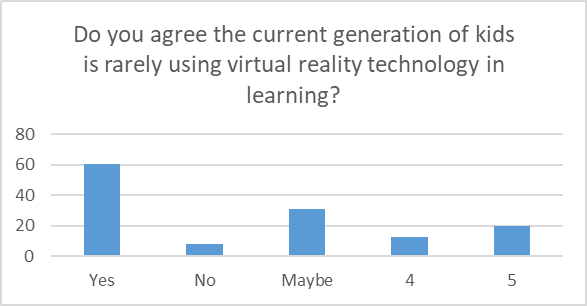
Based on the statistics in Figure 5, the respondents clearly chose “Strong Agree” (64.3%) rating by using multimedia elements will attract children’s attention into the learning process. Only 1% mentioned “Strongly Disagree”.
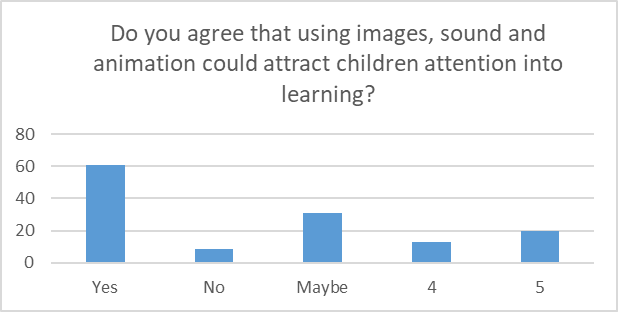
This culminated to the next statistics shown in Figure 6 on the usage of technology into the children’s learning process. It clearly shows that the majority of the respondents (47.8%) “Strongly Agree” that technology does increase the children’s learning process. Only 1 respondent (2.4%) “Strong Disagree” with the statement.
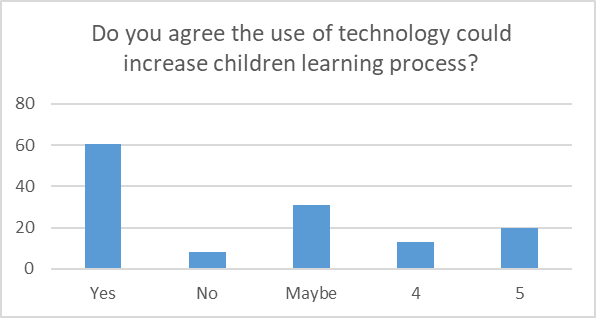
VR in Learning
VR is not an unknown technology among the community. Figure 7 shows the awareness that the repondents have in the said technology. It shows that most respondents (86%) know about the existence of VR. Only 3.5% do not know about it. This implies that VR has an big opportunity to be used in learning as well.
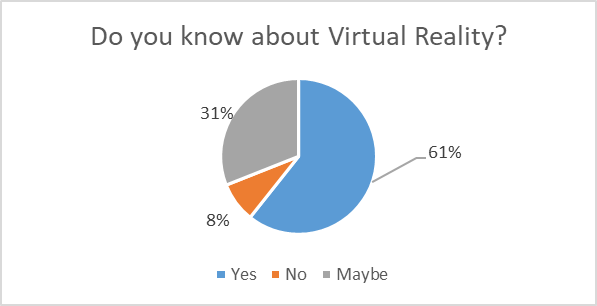
However, not everybody has the chance to use or try VR in person. Figure 8 exhibits the percentage of those who have tried VR. Only 52.3% of the respondents have tried to use VR but quite a number who have not (44.2%). This could also be linked to budget constraints. They may or may not own a VR device.
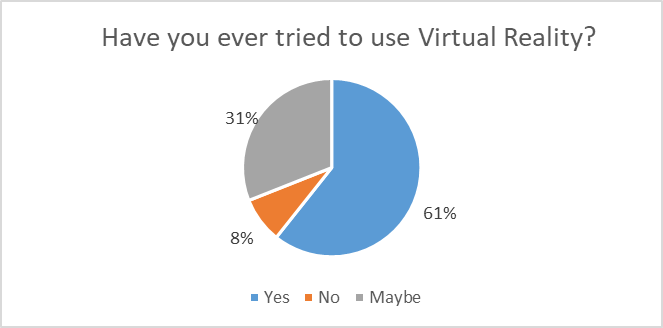
When asked about their budget should they prefer to own a VR device, majority take a rather median amount as shown in Figure 9.
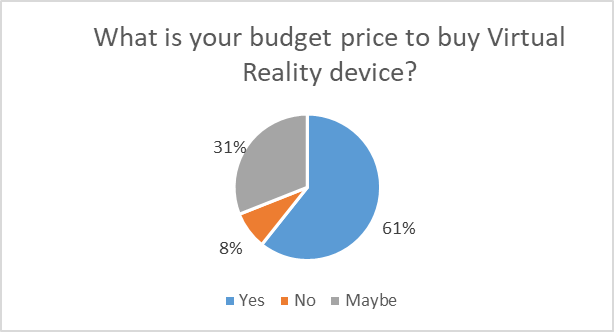
That being said, the respondents do agree that VR is effective for children in remembering for long-term memory. The statistics in Figure 10 shows it.
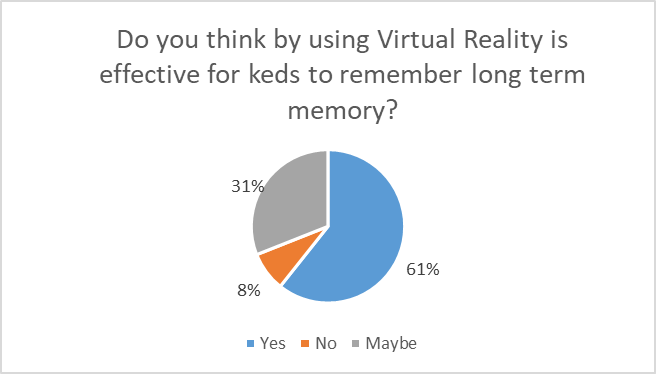
Results
Based on the findings of the survey, the system to enhance the learning process of children was developed. The system includes quizzes to test and gauge the students’ learning curve as a result of using the system. Teachers can make comparisons of students' understanding of learning with the use of this system compared to conventional methods. This can be obtained with quiz scores from one level to another.
Figures 11, 12 and 13 exhibit the VR learning modules for children to recognise alphabets, numbers and colours respectively.
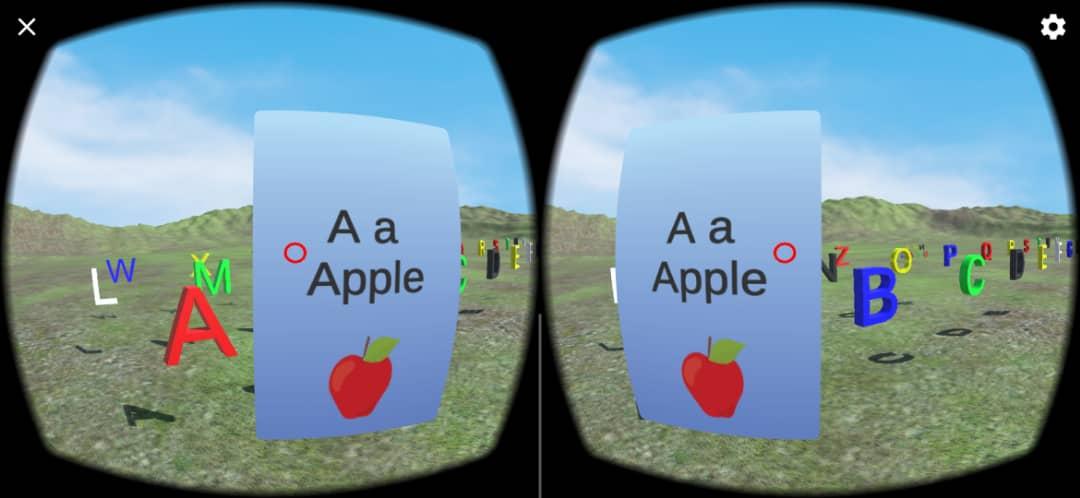
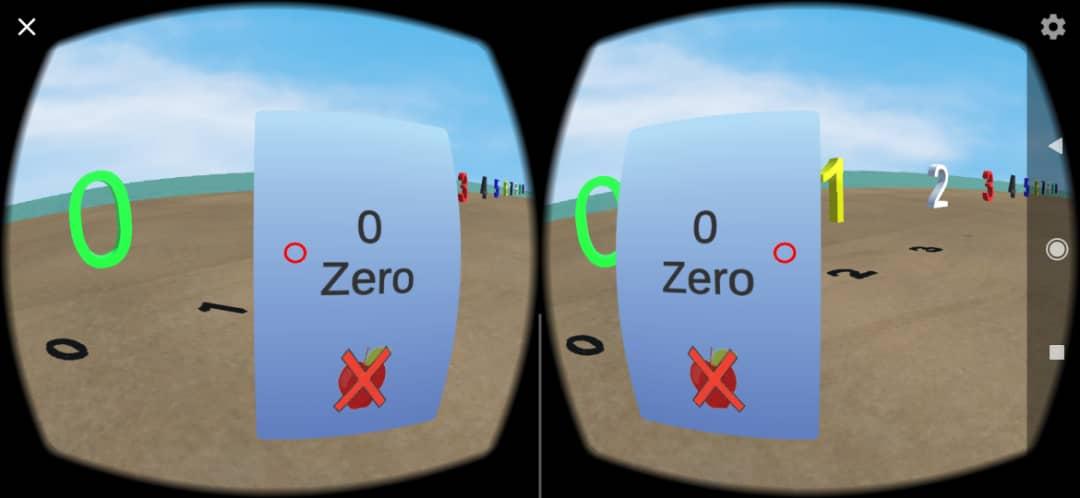
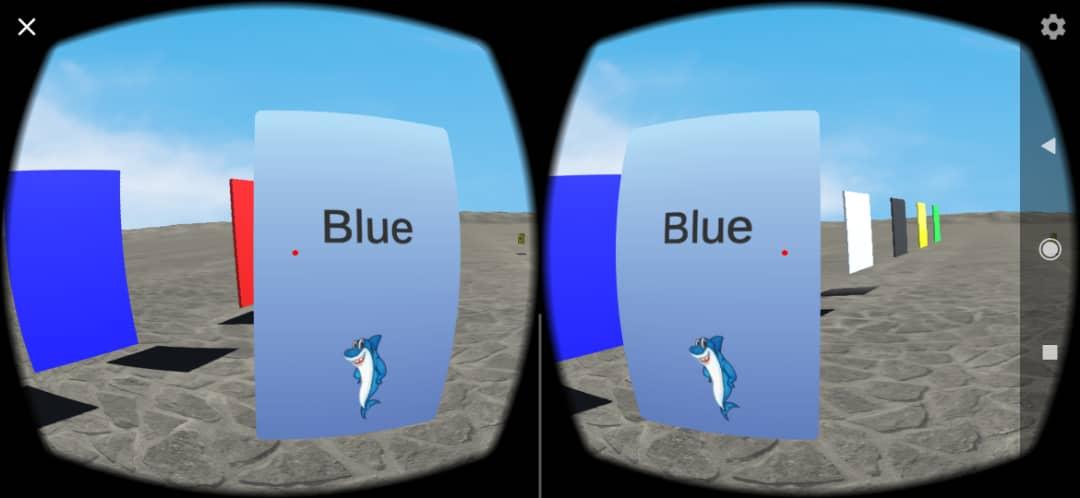
Children are further quizzed on their comprehension over the subject matter taught. The child needs to answer questions which consist of three levels:
- Beginner
- Intermediate
- Advanced
Once the child has completed the quiz module, the results are displayed on the result module. Figure 14 shows an extract of the Quiz Module.
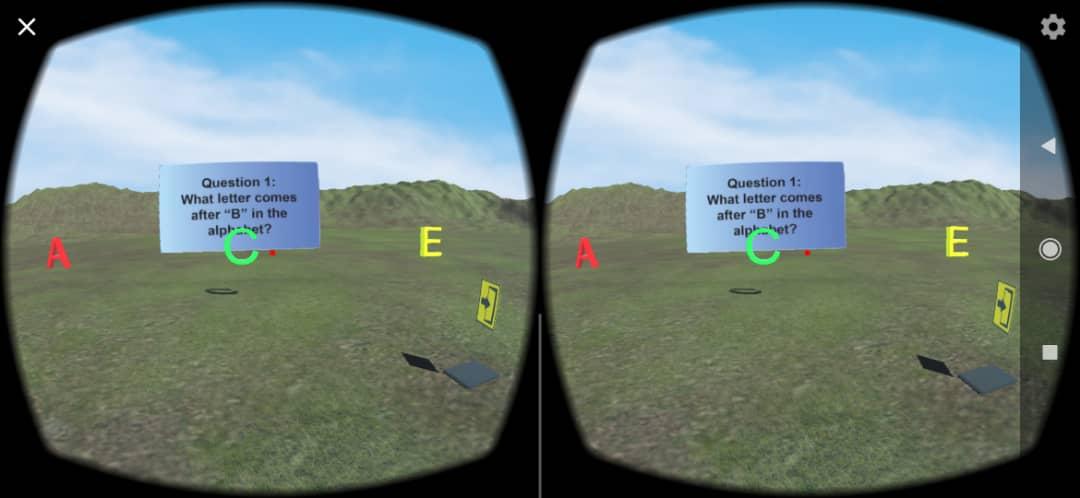
Conclusion
From the results, it can be concluded that for long term memory, VR would be a technology that can be used in learning process of children. Children like colours, sounds and pictures compared to just text. When they use VR, they would enjoy learning more compared to just reading the materials which may bore them right from the start. Technology does make an impact to a child’s learning progress and process. For teachers, this system is an alternative way of teaching because it uses technology in parallel with the use of current pedagogical methods.
Acknowledgments
The authors would like to thank the FYP student of Universiti Selangor who collaborated to finishing the project.
References
Ayoub, A., & Pulijala, Y. (2019). The application of virtual reality and augmented reality in Oral & Maxillofacial Surgery. BMC Oral Health 19, 238. https://bmcoralhealth.biomedcentral.com/track/pdf/
Azar, A. S., & Tan, N. H. I. (2020). The Application of ICT Techs (Mobile-assisted Language Learning, Gamification, and Virtual Reality) in Teaching English for Secondary School Students in Malaysia during COVID-19 Pandemic. Universal Journal of Educational Research, 8(11C), 55-63.
Bates, T. (2014). Teaching in a digital age, Chapter 4: The ADDIE model. Retrieved 25 October 2021 from https://opentextbc.ca/teachinginadigitalage/chapter/6-5-the-addie-model/
Brooks, J. G., & Brooks, M. G. (1999). In search of understanding: The case for constructivist classrooms. Danvers, MA: Association for Supervision and Curriculum Development. https://ocw.metu.edu.tr/pluginfile.php/9173/mod_resource/content/1/In%20Search%20of%20Understanding.pdf
Fabrizia Mantovani (2001). VR Learning: Potential and Challenges for the Use of 3D Environments in Education and Training. In Giuseppe Riva & Carlo Galimberti (Eds.), Towards CyberPsychology: Mind, Cognitions and Society in the Internet Age. IOS Press.
Felder, R., & Silverman, L. (1988). Learning and Teaching Styles in Engineering Education. Engineering Education, 78(7), 674–681. https://www.researchgate.net/publication/257431200_Learning_and_Teaching_Styles_in_Engineering_Education
Khalaf, Bilal Khalid & Mohammed Zin, Zuhana Bt (2018), Traditional and Inquiry-Based Learning Pedagogy: A Systematic Critical Review. International Journal of Instruction, 11(4), 545-564.
Khamparia, A., & Pandey, B. (2017). Impact of interactive multimedia in e-learning technologies: Role of multimedia in e-learning. In D. Deshpande, N. Bhosale, & R. Londhe (Ed.), Enhancing academic research with knowledge management principles (pp. 171-199). IGI Global. http://doi.org/10.4018/978-1-5225-2489-2.ch007
McCrindle Research. (2012). Generations defined. Know the times. Retrieved on October, 16, 2015, from https://www.researchgate.net/publication/306189905_Generations_defined
Mohsen, G., & Samad, M. E. S. (2019). An Investigation of Virtual Reality Technology Adoption in the Construction Industry. IntechOpen. https://www.intechopen.com/books/smart-cities-and-construction-technologies/an-investigation-of-virtual-reality-technology-adoption-in-the-construction-industry
Muijs, D., & Reynolds, D. (2005). Effective Teaching: Evidence and Practice. Sage.
Myamesheva, G. (2015). The Virtue in the Modern Smart World. Pedagogical Science, 44, 152-156.
Nusir, S., Alsmadi, I., Al-Kabi, M., & Sharadgah, F. (2012). Studying The Impact of Using Multimedia Interactive Programs At Children Ability To Learn Basic Math Skills, Acta Didactica Napocensia, 5(2), 17-32.
Pantelidis, V. S. (2014). Reasons to Use Virtual Reality in Education and Training Courses and a Model to Determine When to Use Virtual Reality. Themes in Science and Technology Education, Special Issue, 59-70. https://www.researchgate.net/publication/268002587_Reasons_to_Use_Virtual_Reality_in_Education_and_Training_Courses_and_a_Model_to_Determine_When_to_Use_Virtual_Reality
Swamidason, I. T. J., Raj, J. S. S. B. E., & Kiyasudeen, J. M. (2020). Virtual Reality – A Paradigm shift in Education Pedagogy. Seventh International Conference on Information Technology Trends (ITT).
Copyright information

This work is licensed under a Creative Commons Attribution-NonCommercial-NoDerivatives 4.0 International License.
About this article
Publication Date
31 October 2022
Article Doi
eBook ISBN
978-1-80296-958-0
Publisher
European Publisher
Volume
3
Print ISBN (optional)
-
Edition Number
1st Edition
Pages
1-802
Subjects
Multidisciplinary sciences, sustainable development goals (SDG), urbanisation
Cite this article as:
binti Sardi, R., bin Noli, A., bin Ahmad, F., & binti Shafie, S. (2022). VR Kidos – Virtual Reality Kids Pedagogy Learning System. In H. H. Kamaruddin, T. D. N. M. Kamaruddin, T. D. N. S. Yaacob, M. A. M. Kamal, & K. F. Ne'matullah (Eds.), Reimagining Resilient Sustainability: An Integrated Effort in Research, Practices & Education, vol 3. European Proceedings of Multidisciplinary Sciences (pp. 654-666). European Publisher. https://doi.org/10.15405/epms.2022.10.62

